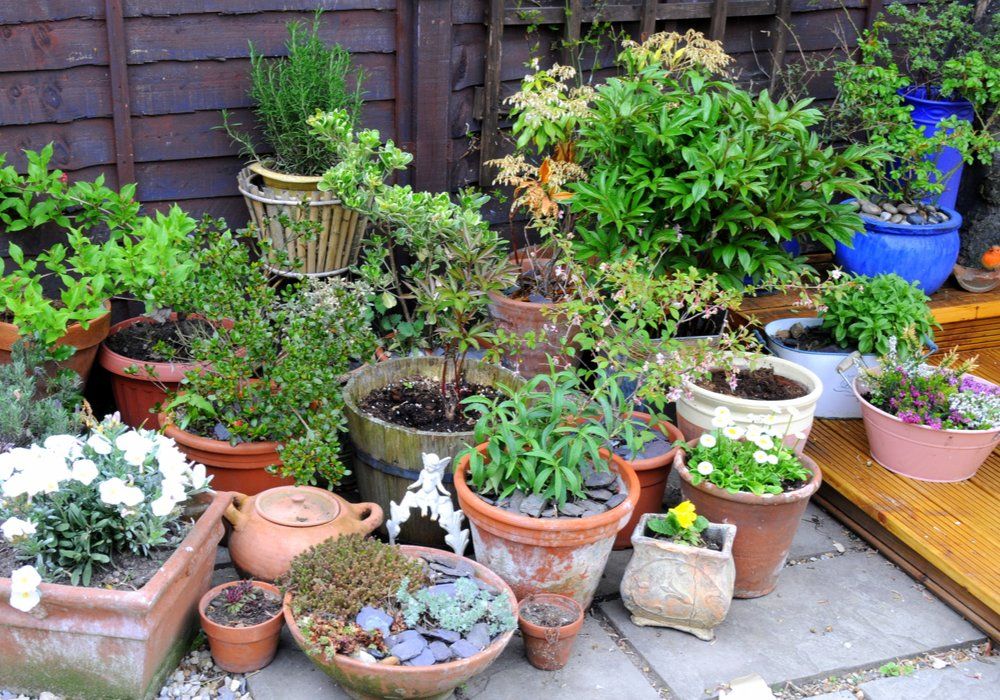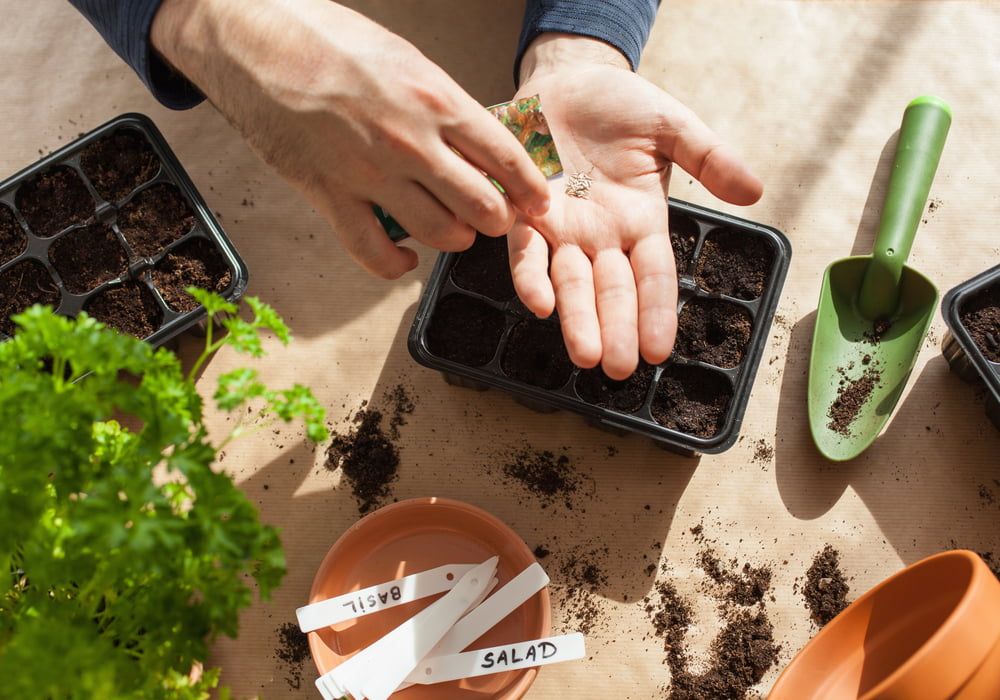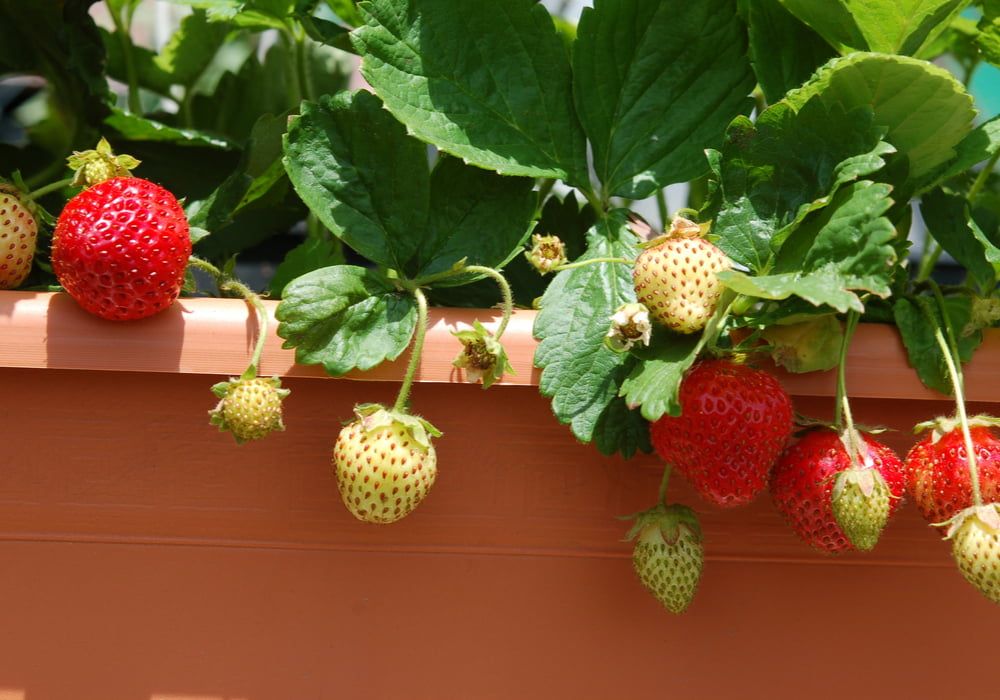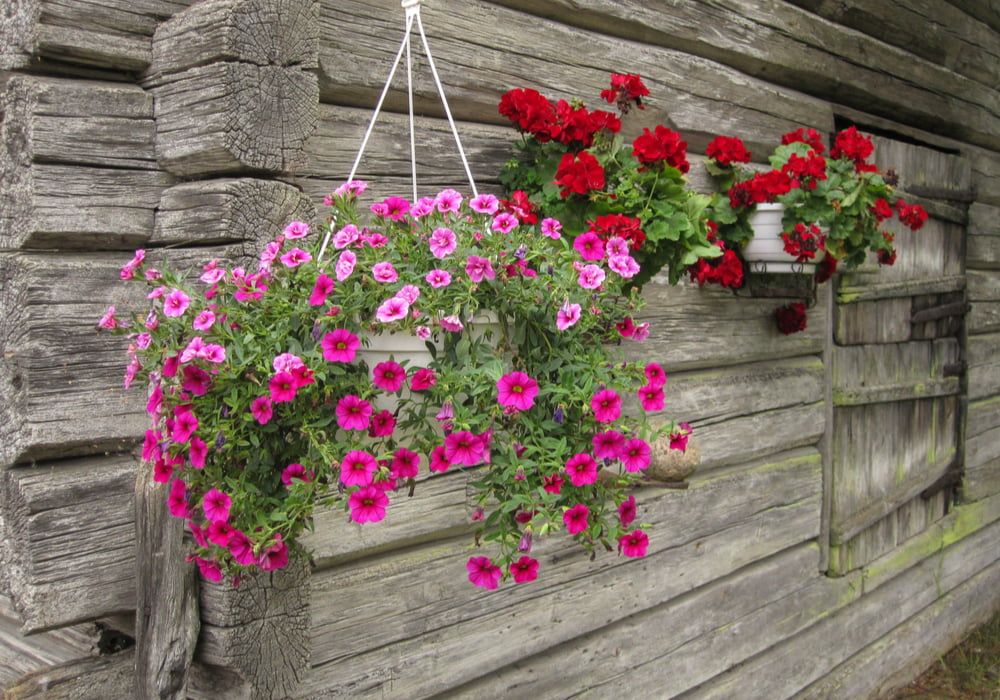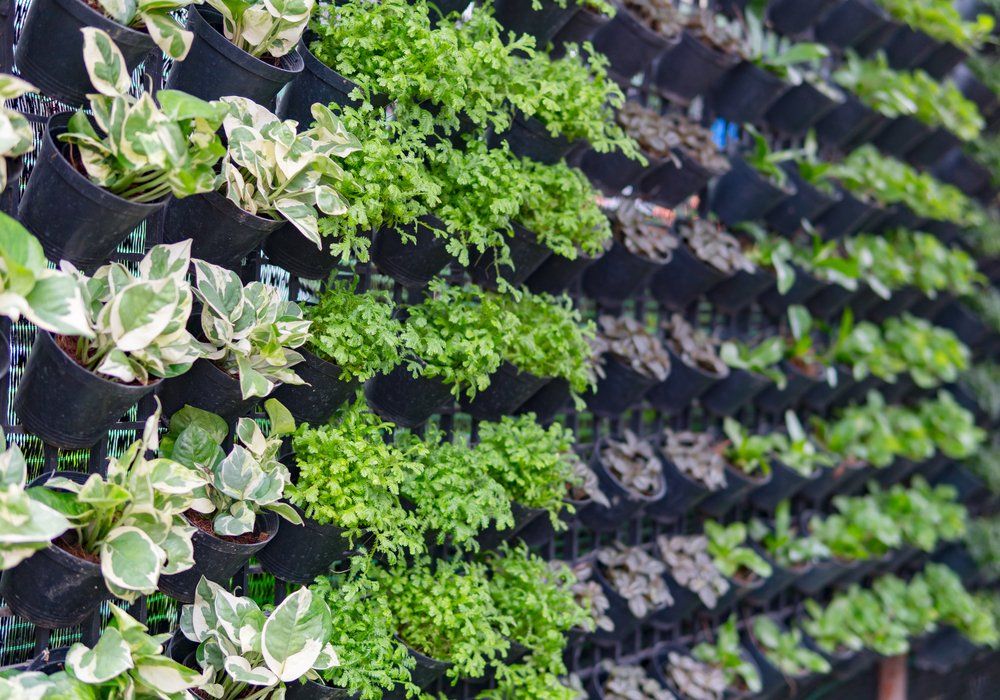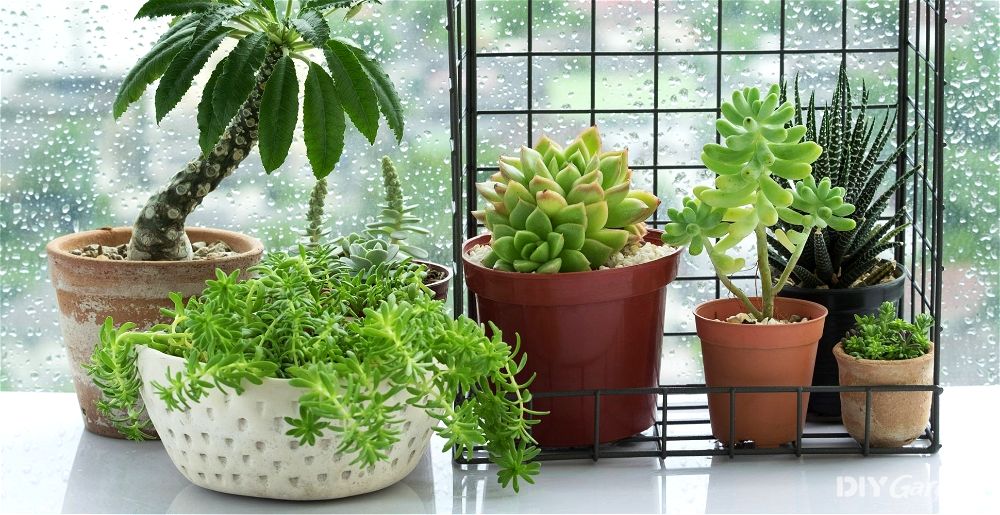
Container gardening is great fun and perfect for the smallest of spaces.
A small balcony can hold a container, and if you’re not up for digging a border then pots can transform your garden. Installing a few potted containers is a quick and easy way to transform your garden in a weekend.
What Type Of Container Should You Use?
There are many different containers on the market including plastic terracotta, wood, and stone.
Moulded plastic pots are reusable, lightweight, cost-effective and sold in all colours to suit your taste, but what you choose is simply a matter of style and budget because they all work well.
Pretty much anything that holds soil and has a drainage hole can be planted up including old shoes, tyres, and watering cans.
Whatever you’re growing in it’ll look best in a set of three or five. There’s something about these numbers that people like!
Grouping containers together also conserves moisture and makes it easier to water them.
READ NEXT: 17 Best Plants for Shallow Pots
How To Plant in Containers
Once you’ve chosen your pots you’ll need compost to fill them, but always pop in a few handfuls of garden soil so good bacteria and bugs can get in there too.
Place broken pots or pieces of styrofoam in the base to cover drainage holes and keep in your compost in place, then fill with compost and add plants or shrubs.
You should place plants in at the same depth they grew in the starter tray.
Top Tip: Don’t water containers until they’re in place because they can get very heavy.
What To Grow In Containers?
You can grow a cracking crop of carrots in a container! They love the soft, stone-free compost. This is true of parsnips, potatoes, raspberries, tomatoes, blueberries, and strawberries too.
Brassicas like cabbages don’t like containers that much but beans such as the patio bean Hestia loves them.
Vegetables can be bought in starter trays or you can sow seeds.
You will have to water them every day during hot spells but what a statement they make – a container vegetable garden is beautiful and tasty too.
Prefer flowers?
There are plenty of flowers and foliage plants that love a container. Bamboo for example which is invasive in the garden will happily grow in a pot as will evergreen box and camelia that make a year-long statement on your deck.
If you prefer a bright and instant effect summer bedding such as marigolds, petunias and pansies will brighten your patio.
Group the same colours or choose constating colours such as blue and orange which are opposites on the colour wheel and bring out each other’s brightness.
You will need to water containers even if it’s not that hot because wind dries them out from the sides. If you’re growing hungry plants like tomatoes or courgettes a feed every week will help too.
Planting Hanging Baskets
Choose light and bright fuchsia, geranium, lobelia, ivy, and petunias as these are quick-growing lively flowers. Or why not grow hanging tomatoes that are safe from slug and snail attacks? The cultivar Hundreds and Thousands is a good choice for hanging baskets.
You’ll need to line your basket with moss or a plastic liner to keep in the soil. Put the uprights like germanium in the centre and lobelia or ivy at the edges so they drape down as they grow.
Water hanging baskets after you’ve hung them up to avoid straining your back, and water them every day as hanging baskets dry out rapidly.
Vertical Planting
You could use pots against a wall, fence or balcony rail to grow climbers that add height.
Add a trellis or obelisk to support clematis, jasmine, or runner beans who love a sunny spot with shaded roots. Climbing roses are another great choice, particularly scented versions in a seating area. Be sure to give climbers plenty of water and feed them once a week.
You could also use pallets to create a green wall, pots on a stepladder, a tall trug, or a store-bought vertical planter to gain elevation around the garden.
Herbs such as thyme and chives enjoy these well-drained conditions and they are useful in the kitchen too.
